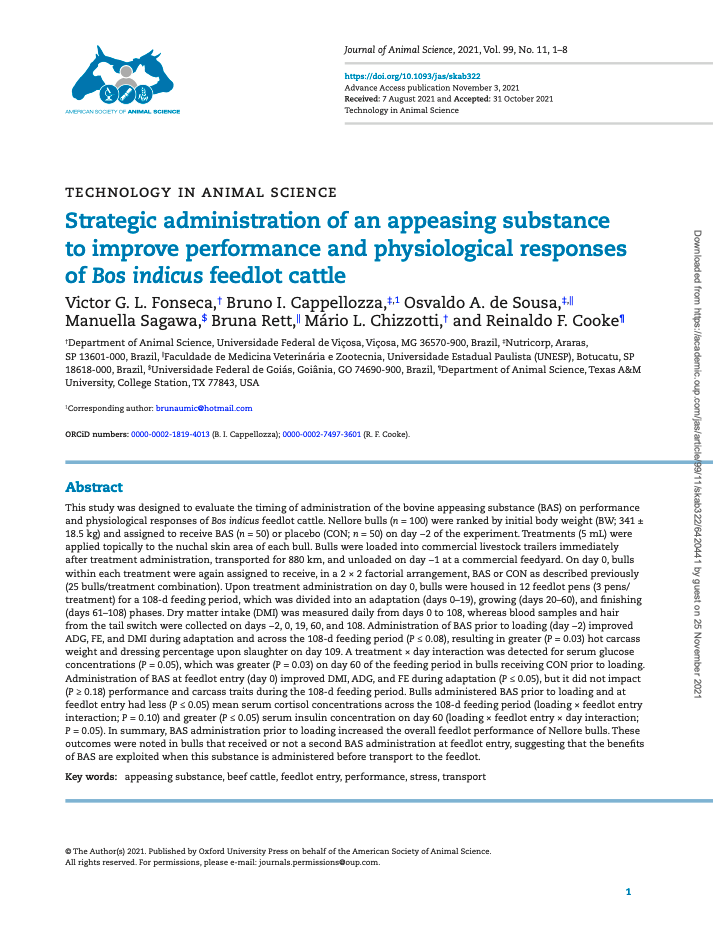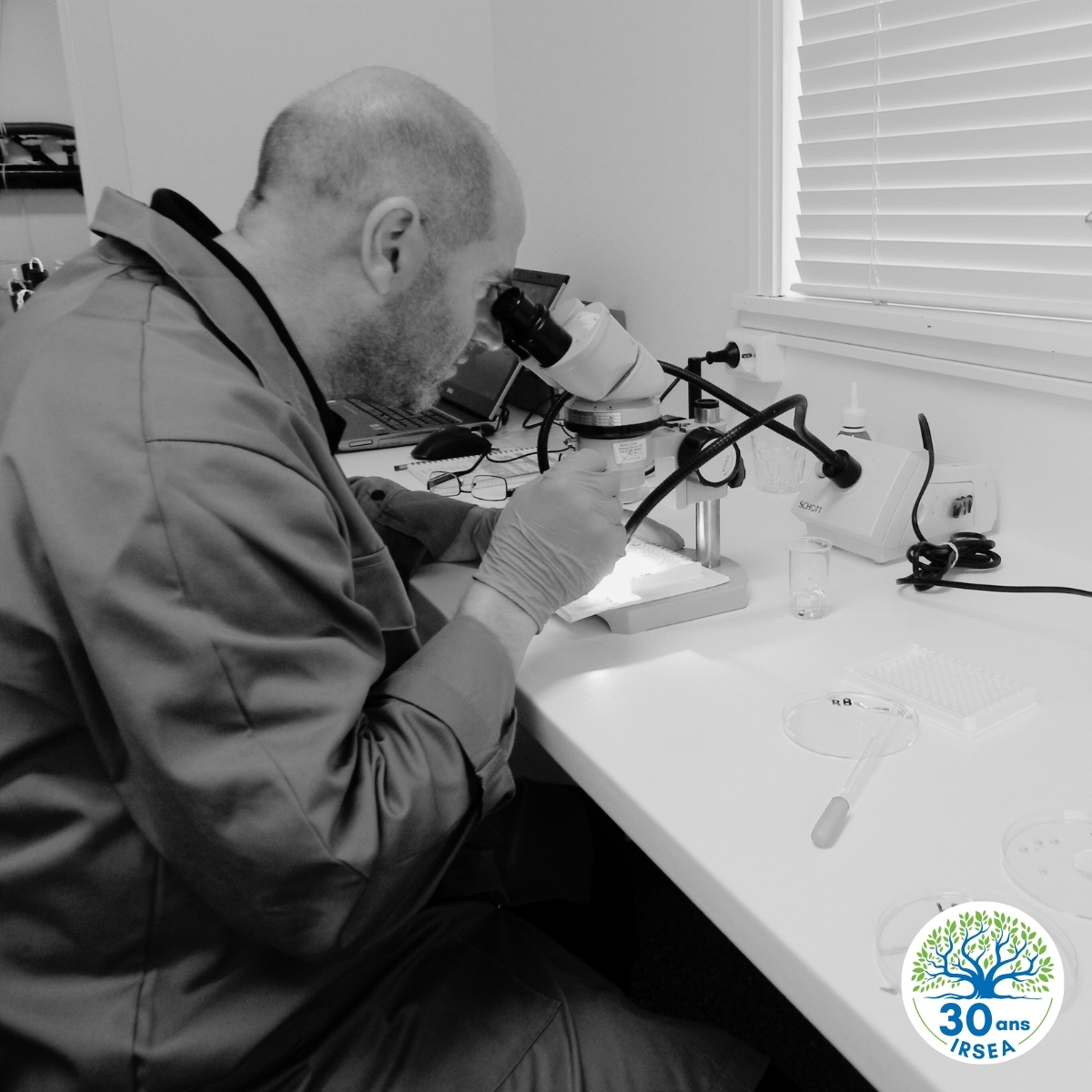Abstract:
This study was designed to evaluate the timing of administration of the bovine appeasing substance (BAS) on performance and physiological responses of Bos indicus feedlot cattle. Nellore bulls (n = 100) were ranked by initial body weight (BW; 341 ± 18.5 kg) and assigned to receive BAS (n = 50) or placebo (CON; n = 50) on day −2 of the experiment. Treatments (5 mL) were applied topically to the nuchal skin area of each bull. Bulls were loaded into commercial livestock trailers immediately
after treatment administration, transported for 880 km, and unloaded on day −1 at a commercial feedyard. On day 0, bulls within each treatment were again assigned to receive, in a 2 × 2 factorial arrangement, BAS or CON as described previously (25 bulls/treatment combination). Upon treatment administration on day 0, bulls were housed in 12 feedlot pens (3 pens/ treatment) for a 108-d feeding period, which was divided into an adaptation (days 0–19), growing (days 20–60), and finishing (days 61–108) phases. Dry matter intake (DMI) was measured daily from days 0 to 108, whereas blood samples and hair
from the tail switch were collected on days −2, 0, 19, 60, and 108. Administration of BAS prior to loading (day −2) improved ADG, FE, and DMI during adaptation and across the 108-d feeding period (P ≤ 0.08), resulting in greater (P = 0.03) hot carcass weight and dressing percentage upon slaughter on day 109. A treatment × day interaction was detected for serum glucose concentrations (P = 0.05), which was greater (P = 0.03) on day 60 of the feeding period in bulls receiving CON prior to loading. Administration of BAS at feedlot entry (day 0) improved DMI, ADG, and FE during adaptation (P ≤ 0.05), but it did not impact (P ≥ 0.18) performance and carcass traits during the 108-d feeding period. Bulls administered BAS prior to loading and at feedlot entry had less (P ≤ 0.05) mean serum cortisol concentrations across the 108-d feeding period (loading × feedlot entry interaction; P = 0.10) and greater (P ≤ 0.05) serum insulin concentration on day 60 (loading × feedlot entry × day interaction; P = 0.05). In summary, BAS administration prior to loading increased the overall feedlot performance of Nellore bulls. These outcomes were noted in bulls that received or not a second BAS administration at feedlot entry, suggesting that the benefits of BAS are exploited when this substance is administered before transport to the feedlot.
Auteur: Victor G. L. Fonseca, Bruno I. Cappellozza, Osvaldo A. de Sousa, Manuella Sagawa, Bruna Rett, Mário L. Chizzotti, and Reinaldo F. Cooke
En savoir plus: https://academic.oup.com/jas/article-abstract/99/11/skab322/6420441?redirectedFrom=fulltext





